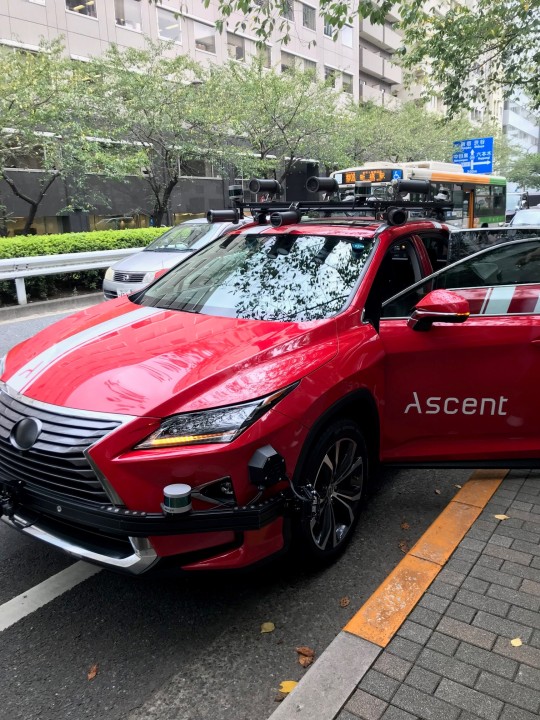
We recently read that the 2 car juggernauts VW and Ford decided to drop Argo AI to “focus on more short term objectives” (1) and some jump to the conclusion that the autonomous dream is dead. For example, Max Chafkin in Bloomberg does not hesitate to write it is “going nowhere” (2)
The reality is not that simple: the combined effect of increasing interest rates and postponement of the start of monetization of the business in comparison to somewhat optimistic promises, mechanically brings down the valuation of potential players. Indeed, companies are valued at the present value of their future earnings. With interest rates at 0, the PV of long term future profits are the same as short term profits. When interest rates increase, mostly short term profit count as long term profits are heavily discounted. If you add the deletion of short-term profits due to the postponement of the launch and deployment of those new products and services, the valuation of shared autonomous mobility plummets. The combination of higher interest rates and postponement of commercial launch brings most “followers” players in the red zone of valueless companies no investor will ever consider. Time has come to consolidation into a “winner or couple of winners take all” model. Players who are late or don’t expect any monetization of their activity before long have no chance to survive against leaders.
And leaders are telling us they are coming soon. There is not a single week if not day without news of a new implementation of a new service or of a bespoke vehicle launch. Some of them are in the US: Waymo -with already over 600 operational vehicles –just announced extension of its service in San Francisco and the launch of its first robotaxi vehicle developed by Geely-
Cruise, GM subsidiary, which will launch its first vehicle, Origin, in a year and announced an acceleration of its geographical expansion –and Cruise is partnering with Honda that will start its service in Tokyo in a few years-,
Zoox – Amazon- is also launching a vehicle this year and Motional the JV of Aptiv and Hyundai partnering with Lyft has just announced its service expansion to LA.
In China, the main players are Baidu with its partnership with Geely into Jidu –Baidu already having services in 10 main cities in China, targeting 65 in 2025 and production of 800,000 robotaxi in 2028 – Baidu even announced it locally grabbed 10% of the ride hailing market in a given suburb of Beijing.
AutoX has launched its service in 4 Chinese cities with over 1000 vehicles operating and Wedrive, partnering with Nissan –
On OEM sides, just in a few days, Nissan announced the launch of a new company in China and Stellantis that it is investing in aiMotive to accelerate the development of autonomous vehicles (3) and recently, VW CEO Thomas Schafer declared that autonomous driving will be mainstream by 2030, not with Argo obviously but probably with Mobileye (4).
We should of course mention Tesla, whose technical choice -no LIDAR, advancement of development of “full self-driving” option and potential bespoke Robotaxi vehicle in 2024- are largely debated.
I recommend the excellent website of Marc Amblard Orsay Consulting (SV) for a more comprehensive view.
In total, several thousand robotaxis are operating globally in about 20 cities in the US and China. Even though most of them are still at POC level in a pre-commercial state, this makes Brad Templeton write this understatement in Forbes: “Reports of the death of self-driving cars are greatly exaggerated” (5)
The acceleration of the implementation is exponential but exponentiality is not well understood. If the industry was at 0.001 10 year ago and knowledge is doubling every year, it would be at 1 today and no one would see the acceleration, just a straight line in the rear mirror. But if rate of progress remains the same, it will be at 10 in 3 years, 1000 in 10 years and 1,000,000 in 20)
The last argument is about to fall
Some said that robotaxis create more problems than they solved. In a recent article in Forbes, Brad Templeton highlights the low level of disruption with just 12 reports in 6 months. This is not bad for an emerging technology and the reason is that the remaining players -in that case Waymo and cruise- will not take any risk of a fatal accident. They know the enemies of progress will not let them make any mistake that could endanger the mass implementation of their technology. Unlike ChatGPT that feeds back a lot of mistakes, a 2 tons vehicle in the street of a big city cannot afford most of bugs that can end up in a fatal crash. When it is ready, the speed of expansion will be faster than many imagine.
When will it come then?
I had predicted since 2016 that, after five years of tests and proofs of concept from 2020, the market of shared autonomous vehicles would take off around 2025. It will start as services for passenger and commercial vehicles, more than as option of owned vehicles, it will first be available in designated area (maybe not where traffic is tough or snow is frequent) where demand and regulation allows (China, most of the states of the USA are allowing their deployment and more and more countries in the world are adapting their legislation). There is no reason to change this prediction today. Autonomous driving is not dead and it should not be as we will need it. It will be an important brick of affordable carbon free mobility that we should rather promote in a time of inflation and focus on solutions to climate change.
Who is right? What do you think?
(4) https://www.autocar.co.uk/car-news/new-cars/volkswagen-autonomous-cars-be-mainstream-2030-says-ceo
(5) https://www.forbes.com/sites/bradtempleton/2022/11/15/reports-of-the-death-of-self-driving-cars-are-greatly-exaggerated/?sh=60bc4c5943e2
Picture: A prototype of an autonomous car in 2018 in Tokyo, since then the Japanese startup Ascent, decided to focus on autonomous robots. Credit GG
